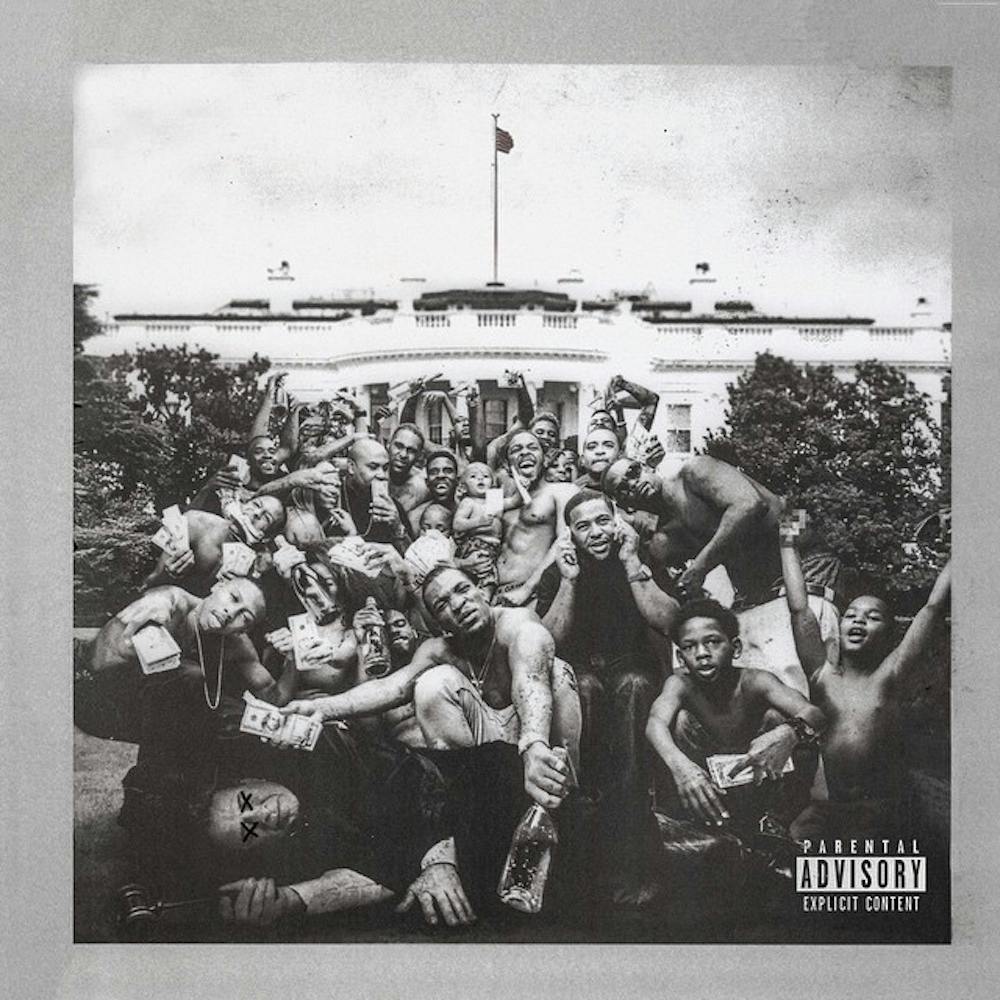Released: 3/17/2015
7/7 stars
2015 has already been and will continue to be a year in music built around rap. From J. Cole’s 2014 Forest Hills Drive to Drake’s new mixtape that’s already been memed to the umpteenth degree to new Kanye West, Action Bronson, Snoop Dogg, Jay Rock and everyone else set to be released, this year is a culmination and ultimately trial to see who comes out on top.
Yesterday, Kendrick Lamar’s To Pimp a Butterfly was accidentally put onto iTunes, subsequently leaked, then taken off iTunes, followed by the clean version going back up and eventually everything was released again into the stratosphere. It makes sense that all of this chaos went into releasing the album because ultimately that’s what the album’s about. It runs on and preaches about pushing the status quo, thinking about what’s normal and turning it on its head.
With that being said, this is coming from as biased a source can get. Section 80 and good kid, m.A.A.d city are two of my favorite albums.
GKMC, in particular, is as focused in as an album can get and a masterpiece in its own right. Supposedly, all of the events that occur throughout the course of the story take place through one day. Every phone call with Lamar’s mom to evading the cops culminate together to create a cohesive story that is unlike anything I’ve ever heard before.
Now, to To Pimp a Butterfly.
Like its predecessor, the new album is at its best when listened in the order that Lamar wants you to hear it. It has its highs and lows but there is a story being told. Unlike GKMC, however, TPAB is much more comprehensive and wide-ranging. Every song is Lamar wrestling with his demons (literally at times) and trying to reach out to an African-American community and create a more diplomatic environment. It’s not taking place in a few hours but seems to start from Lamar’s first foray into rap, and ending with where he is now, with all of the fame and accolades.
Perhaps the best instance of this is in “The Blacker the Berry,” the lead single off the album (don’t want to spoil anything), in which Lamar calls himself a hypocrite but doesn’t reveal why until the end of the song. This song, and much of the album, deal with Lamar being disgusted at the racism still prevalent today and how it is hypocritical to be sickened by it with so much inner-tension within the black community, instead of joining together and making a difference.
For most albums, there are a few songs that stand out. Sometimes it’s the pop, more radio-friendly singles and other times it’s the track with the “hottest” verse that make it to the radio playlists. However, for Lamar, this is not the case. There may be some songs that stand out to the individual listener however they are at its best as an amalgamation. “i,” for example, works well as a fun, optimistic hit when first released but in the album it is strengthened by what it follows and precedes. The message to be grateful and cheerful is evident without the album around it but its importance is increased tenfold through what surrounds it.
The greatest part about this album is that Lamar, himself, doesn’t really have a solution. Like all great philosophers and speakers of their times, Lamar is attempting to point out the negatives and problems in society while explaining why they must change. For example, in the outro of the album closer, “Mortal Man,” Lamar interviews a deceased musician about the evils that plague all of us. This finale suggests why Lamar created this album and what he is trying to express.
Most albums can be reviewed and graded with a neat little bow after one listen, but Lamar inserts so many references, analogies, historical references and opinions that it’s impossible to give it a grade on the first day. I mean, yeah, it’s great. Stellar, fantastic, wonderful…any positive review would work but to give it a grade, just 12 hours after its release, would be blasphemous. Now, it’s time to go, I have to listen to “To Pimp a Butterfly” again.





